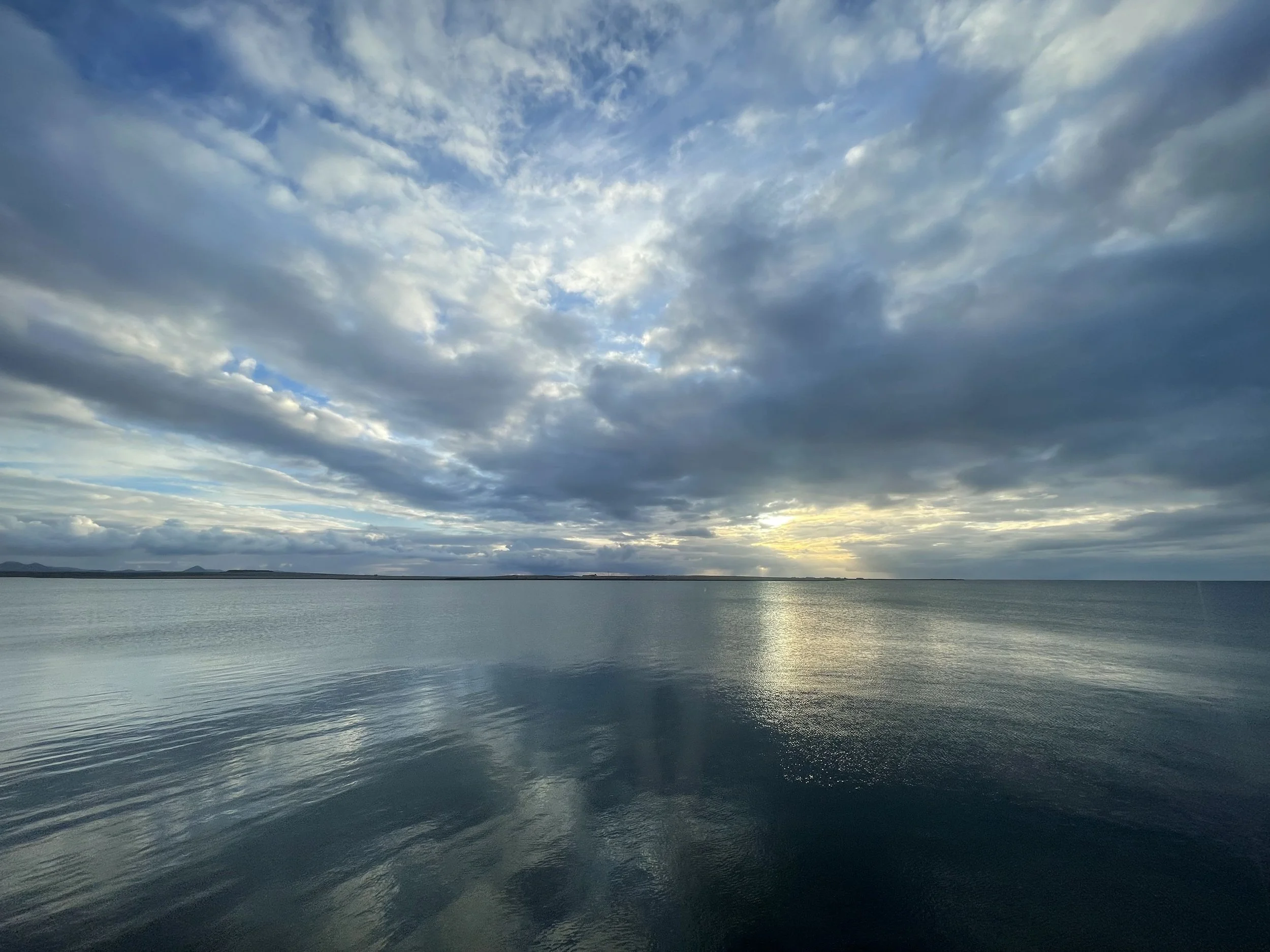Debate Over Mother Earth’s ‘Rights’ Stirs Fears of Pagan Socialism
Religious and political conservatives have long feared the global march of paganism and socialism. In their view, it was bad enough when Earth Day emerged in 1972, promoting a socialist agenda. But now, under the auspices of the United Nations, the notion has evolved into the overtly pagan, and thus doubly dangerous, International Mother Earth Day.
Seventh World Religious Freedom Congress Meets
Letter to the Editor
The first thought is that everything is so beautifully done, with such finesse and excellence. So much care has gone into this. It is remarkable and very much deserving praise and conscious appreciation.
Interfaith Peacemaking on the Documentary Screen
Social Justice as a Unifying Issue for Dharmic Communities
A Review of Ruth Broyde Sharone’s Minefields & Miracles
Truth be told, I approached Ruth Broyde Sharone’s Minefields & Miracles – Why God and Allah Need to Talk with trepidation – review a 350-page memoire of her travels interwoven with enough photos to fill one of grandpa’s slide carousels?!
Interfaith Call to Action on Climate Change
Thich Nhat Hanh: In 100 Years There May Be No More Humans on Planet Earth
Occupy Faith National Conference: Let the walls come crumbling down!
How Faith Communities Are Supporting the Earth
Interfaith Environmental Activism
How Faith Communities Are Supporting the Earth
by Paul Chaffee
Interfaith Environmental Activism
Lynn White, Jr.
Historian Lynn White, Jr. kick-started a discussion of religion and the environment in 1967 with an article in Sciencetitled “The Historical Roots of Our Ecological Crisis.”Environmental disasters were accelerating in the sixties in America and helped establish an annual Earth Day celebration in 1970. White, a distinguished professor at UCLA, laid the blame for an uncaring, abusive, destructive attitude towards nature on Christianity’s door. White’s brilliance and the audacity of the claim gave rise to a host of discussions, approving and disapproving, that eventually led in many different directions.
Thirty years later Mary Evelyn Tucker and John Grim put “religion and ecology” on the map through a series of ten conferences between 1996 and 1998 at Harvard University’s Center for the Study of World Religions. These landmark gatherings generated a series of books along with an internet portal, The Forum on Religion and Ecology at Yale, which remains one of the best sites available for exploring the relationship between religion, its practice, and the Earth.
Today the continuing acceleration of natural disasters and the scientific community’s increasing clarity about human-induced climate change have raised the stakes enormously. Susan Brooks Thistlethwaite, a Christian clergyperson, writing about Earth Day last month in the Washington Post, charged, “It’s time for a change. No more flowers and beach balls that look like the earth. In Christian theological terms, it is time for righteous anger and judgment on the way in which the continued willful destruction of the planet’s ecosystem is causing widespread suffering and loss.”
Taking Local Responsibility for the Mess
Most religious groups today have begun to champion better care of the Earth, and you’ll find some of the most creative work going on at the grassroots. Clergy and lay leaders from a variety of faiths founded the Chesapeake Interfaith Environmental Group three years ago. Their mission – “to celebrate the gifts of God’s creation through worship and putting our faith into action for the care of the earth” in their region near Washington, DC. William Hathaway, a Presbyterian minister who co-chairs the group, told local reporter Lara Lutz, “Religious people, scientists, and environmentalists need to be working together.” (Chesapeake Bay Journal) And they are.
Ugandan forests continue to be a risk. Photo: K. Dunn
Ten years ago, when Nathan Kyamanywa became an Anglican bishop in Uganda, he gave a tree seedling to each of his 55 parishes, and the planting has never ceased. Two-thirds of Uganda’s forests have been leveled in the past 20 years, the population is growing, and wood and charcoal are the only inexpensive sources of energy. Deforestation has increased Ugandans vulnerability to climate - related extreme weather. Today Muslims, Catholics, Coptics, as well as Anglicans and other religious groups are working to regreen the country. Bishop Kyamanywa recently gave 60,000 seedlings to a secular environmental group. In crisis, they have become ‘one family’ in the quest to save the land where they live.
The Bigger Picture
Clerics and lay leaders from dozens of traditions have begun publicly lobbying legislators on behalf of the Earth. Four years ago leaders from different faiths launched the Australian Religious Response to Climate Change and have racked up significant achievements. More recently, Interfaith Moral Action on Climate launched a call which can be found in this issue of TIO; IMAC is developing a detailed lobbying strategy.
Within most traditions today you’ll find a profusion of activity. Do a Google search by adding “green” to Buddhist, Christian, Hindu, Jew, Mormon, Muslim, Pagan, or the religion of your choice, and then start to scroll. If we could only get them all networked – what synergy!
The missing link in this story is any significant international interreligious summit to align religious communities from all traditions to face the growing consequences of global warming. The Interfaith Center for Sustainable Development, based in Jerusalem, is making a valiant attempt to start such a movement. Two months ago they held their second international gathering to build agreement among Abrahamic religions and others about better protecting the earth. One reporter, Miriam Kresh, suggested that the hierarchs’ meeting showed “great willingness to learn, but little to go on,” and the title of her story is “Interfaith Eco-Conference Reveals Need to Educate Religions Leaders.”
The statue Christ the Redeemer towers over Rio de Janeiro.
A much more robust, constructive gathering is next month’s RIO + 20, the short name for the United Nations Conference on Sustainable Development, June 20-22, in Rio de Janeiro, Brazil. (Twenty years ago the first such conference also met in Rio.) Next month’s gathering is expected to attract 50,000 participants including 150 heads of state, along with legislators, academics, civic leaders, business people, community organizers, and, of course, religious leaders. This largest gathering ever planned by the United Nations will be thoroughly interfaith simply because of who is attending. Participants will be focused on two themes: a green economy in the context of sustainable development poverty eradication and the institutional framework for sustainable development. Seven special issue areas will be: decent jobs, energy, sustainable cities, food security and sustainable agriculture, water, oceans, and disaster readiness.
The Temple of Understanding, a pioneering international interfaith organization, in conjunction with the Interfaith Consortium for an Ecological Civilization, has been preparing and networking religious leaders taking an active role at RIO + 20.
The issues before us and the difficulties they generate are nothing new. Buddhism’s most influential convert, the Emperor Ashoka, worked to discourage deforestation, reduce the consumption of meat, and promote other ‘sustainable development’ notions 2200 years ago.
One of the ancient inscribed pillars Ashoka raised in South Asia promoting peacemaking and sustainable development.
What has changed are the stakes, so much higher for the human race today. Perhaps the most encouraging observation is this: during a crisis, like Uganda’s deforestation, we tend to set aside our differences more easily and go to work for what is important to us all. The question for us today – How much can be done before things get much worse?
A final word needs to go to traditions which are variously called Aboriginal, Earth-based, Indigenous, and Pagan, traditions that haven’t shown up so far in this essay. In part that is because they tend to be less institutionalized, less listened to. What they do have to offer, however, is a deep, complex sacred sense of nature and Mother Earth that is absent in so much religion today. Though often bullied and abused historically by the dominant institutional traditions, they have retained their wisdom and stand ready to share what they know about spiritual practice and living on this Earth. Protecting the Sacred in a Shattered World by Phil Lane, Jr. in the last month’s TIO is a good starting place.
Exemplary Resources for Interfaith Environmental Activism
Anyone interested in religion and the environment has a host of internet sites to visit. How to choose? The three resources profiled below, very different from each other, are examples of the best you can find: an online, open-source curriculum – an interactive film – and a secular agency helping religious, spiritual folk with environmental information and advice, besides hosting a raft of its own projects.
* * *
Religion, Environment, and International Relationships is a course overview and syllabus written by Cynthia Sampson. It is one of several online open-source curricula focused on religion and peacemaking developed by the University of Denver’s Center for Sustainable Development and International Peace. Any serious student of these issues will find a wealth of information in all of them.
RENEWAL is a 90-minute feature which can also be viewed as eight 9-to-15 minute stand-alone documentaries about religious environmental activists. Terrific to watch all the way through, and a great tool for a series of classes.
Alliance of Religions and Conservation (ARC) was founded by HRH Prince Philip of England, then president of the World Wildlife Federation. In 1986 he gathered leaders from five religions to Assisi, in Italy, to discus how their faiths could help save the natural world. The discussion continued, more faiths joined, and in 1995 ARC was launched. It is a secular body that helps the major religions of the world develop their own environmental activities, based on their own core teachings, beliefs and practices. It helps religions link with scientists and key environmental organizations – creating powerful alliances between faith communities and conservation groups.
Header Photo: Unsplash
Clooney, Kony and Why Interfaith Matters
The Kony 2012 video has now amassed more than 83 million views on YouTube and triggered a response with which Invisible Children can’t keep up. To make things worse, this viral phenomenon has triggered assertions that have called the non-profit’s integrity into question on multiple levels. It sounds like a mess. But at least a significantly larger portion of the world’s population knows something about the horrors taking place in Uganda, right?
How a Samoan Mormon Became a Global Interfaith Activist
Finding Your Voice in an Interfaith World
Remembering John Hick (1922-2012)
Exploring Religious Identity in Omaha and Beyond
“Wait, you’re a Muslim? But you’re not even brown!”
Emina was setting up a video blog for her interfaith youth service project two years ago. Instead of a tart response to her fellow-student, Emina videotaped her answer, using the opportunity to explain the diversity within Islam and her own identity as a Muslim.
Making Interfaith Cooperation a Social Norm
Interfaith Women Exploring New Ways to Lead
Hearing the Emerging Voices, Including Your Own
Global Gathering of Indigenous and Pagan Elders
“Nourishing the Balance of the Universe” was held March 3rd through 7th in north-central India’s city of Haridwar, which means “Gateway to God” in Hindustani. Sponsored by the International Center for Cultural Studies and others, the gathering was by, for, and about Pagan and Indigenous peoples and their issues. For me it was unique – attending a conference where most participants were indigenous peoples from around the world, including a large number of European Pagans, but no Christians, Muslims, or Jews.










